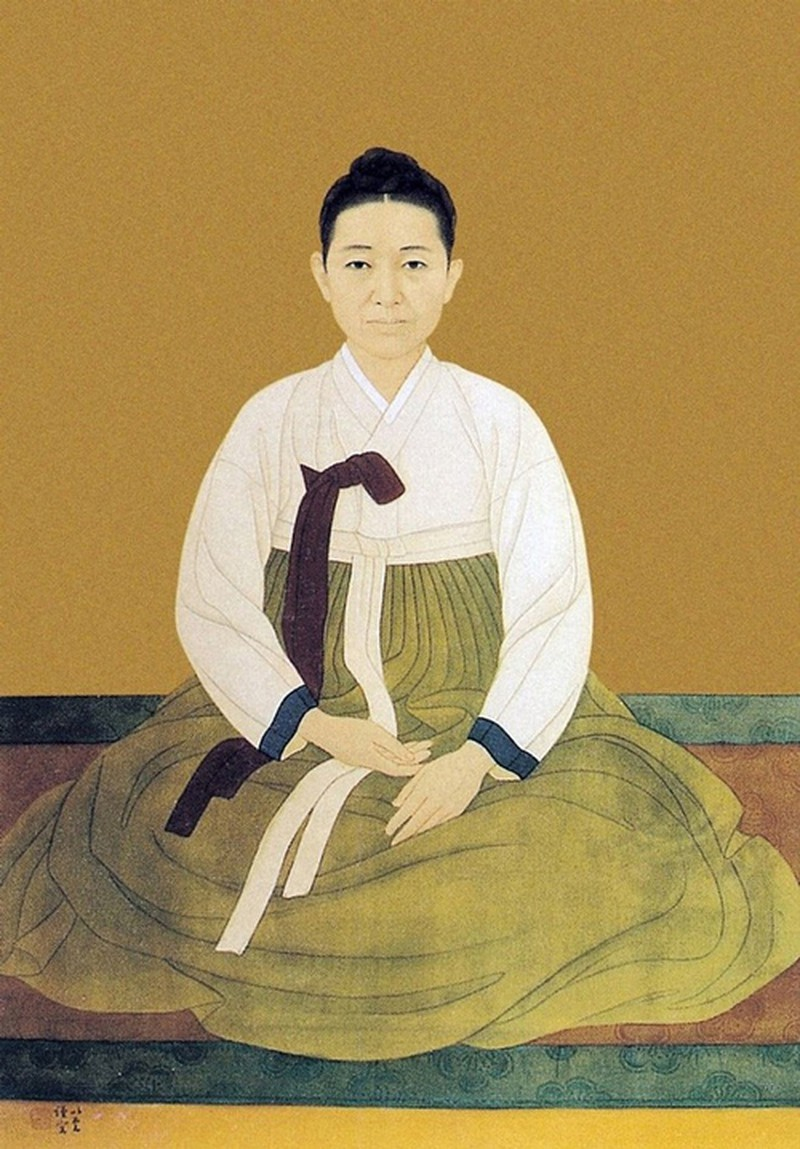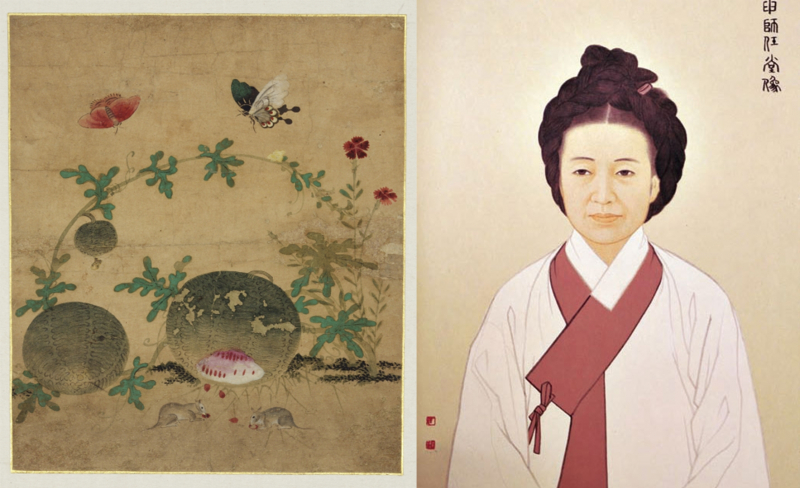Shin Saimdang
Shin Saimdang (Hangul: 신사임당, Hanja: 申師任堂; 29 October 1504 - 17 May 1551) was a Joseon period Korean artist, writer, calligraphist, and poet. Her birthplace is Gangneung, Gangwon Province. Her birth home, Ojukheon, which is also the home of her maternal family, has been well preserved to this day. She was the mother of Yi I, a Korean Confucian scholar. Her respectful nickname was Eojin Eomeoni ("Wise Mother"), and she was often held up as a model of Confucian ideals. Shin In-seon was her given name. Saim, Saimdang, Inimdang, and Imsajae were her pen names. She was a contemporary of poet Heo Nansseolheon, and the two women were rivals.
Shin Saimdang is the first South Korean woman to appear on a banknote. In June 2009, the Bank of Korea issued the first 50,000 won note. On February 25, 2009, the design for the 50,000 won was unveiled. On the front was a portrait of Shin Saimdang and her drawings, Mokpo Grapes and Chochungdosubyeong (National Treasure No. 595). On the back, paintings (wolmaedo and pungjugdo) were depicted. In contrast to other bills, the illustrations on the back of this bill were drawn vertically. Shin Saimdang was chosen as the main character of 50,000 won by the Bank of Korea on May 5 because she is "a representative female artist in the middle of the Joseon period" and "a person who has accomplished a remarkable achievement in gifted education by fulfilling her wife role." The selection was made because it is expected to contribute to raising awareness of gender equality in Korean society, as well as the importance of education and family (Other 50,000-winners included Kim Gu, Gwanggaeto the Great, Ahn Chang-ho, Jang Yeong-sil, and Ryu Gwan-sun.)
Feminist critics, on the other hand, have criticized this choice for reinforcing sexist stereotypes about women's roles.
Birthdate: October 29, 1504
Birthplace: Gangneung, South Korea
Died: May 17, 1551












